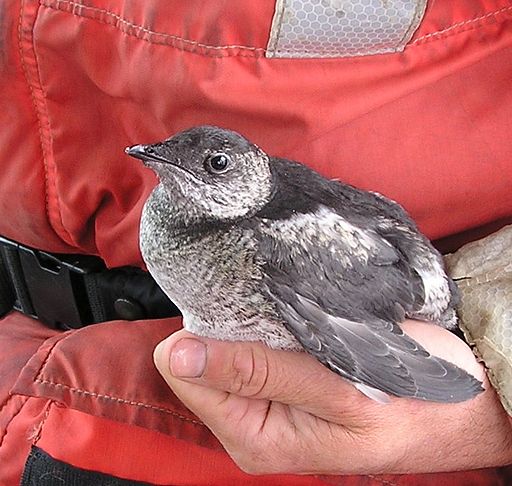Superregnum: Eukaryota
Cladus: Unikonta
Cladus: Opisthokonta
Cladus: Holozoa
Regnum: Animalia
Subregnum: Eumetazoa
Cladus: Bilateria
Cladus: Nephrozoa
Superphylum: Deuterostomia
Phylum: Chordata
Subphylum: Vertebrata
Infraphylum: Gnathostomata
Megaclassis: Osteichthyes
Cladus: Sarcopterygii
Cladus: Rhipidistia
Cladus: Tetrapodomorpha
Cladus: Eotetrapodiformes
Cladus: Elpistostegalia
Superclassis: Tetrapoda
Cladus: Reptiliomorpha
Cladus: Amniota
Classis: Reptilia
Cladus: Eureptilia
Cladus: Romeriida
Subclassis: Diapsida
Cladus: Sauria
Infraclassis: Archosauromorpha
Cladus: Crurotarsi
Divisio: Archosauria
Cladus: Avemetatarsalia
Cladus: Ornithodira
Subtaxon: Dinosauromorpha
Cladus: Dinosauriformes
Cladus: Dracohors
Cladus: Dinosauria
Ordo: Saurischia
Cladus: Eusaurischia
Subordo: Theropoda
Cladus: Neotheropoda
Cladus: Averostra
Cladus: Tetanurae
Cladus: Avetheropoda
Cladus: Coelurosauria
Cladus: Tyrannoraptora
Cladus: Maniraptoromorpha
Cladus: Maniraptoriformes
Cladus: Maniraptora
Cladus: Pennaraptora
Cladus: Paraves
Cladus: Eumaniraptora
Cladus: Avialae
Infraclassis: Aves
Cladus: Euavialae
Cladus: Avebrevicauda
Cladus: Pygostylia
Cladus: Ornithothoraces
Cladus: Ornithuromorpha
Cladus: Carinatae
Parvclassis: Neornithes
Cohors: Neognathae
Cladus: Neoaves
Ordo: Charadriiformes
Subordo: Alcae
Familia: Alcidae
Genus: Brachyramphus
Species: Brachyramphus brevirostris
Name
Brachyramphus brevirostris (Vigors, 1829)

Brachyramphus brevirostris egg
References
(The) Zoological Journal. 4 p. 357
Vernacular names
brezhoneg: Godog beg berr
čeština: Alkoun krátkozobý
Deutsch: Kurzschnabelalk
English: Kittlitz's Murrelet
Esperanto: Mallongbeka urio
español: Mérgulo piquicorto
suomi: Lyhytnokkamurri
français: Guillemot de Kittlitz
italiano: Urietta di Kittlitz
日本語: コバシウミスズメ
Nederlands: Kittlitz' alk
پنجابی: براچیریمفکس بریویروسٹرس
русский: Короткоклювый пыжик
svenska: Brunalka
Türkçe: Kittlitz dalıcımartısı
中文: 小嘴斑海雀
Kittlitz's murrelet (Brachyramphus brevirostris) is a small alcid found in the waters off Alaska and Eastern Siberia. This near threatened species is, like the closely related marbled murrelet, unusual for seabirds in not being colonial, nesting instead in isolated locations on mountain tops, where the nests were known to Native Americans for many years before skeptical ornithologists described and photographed them. It is a poorly known and little studied species, although concern over its status and that of the closely related marbled murrelet has led to a recent increase in research.
The common name of this species commemorates the German zoologist Heinrich von Kittlitz, who first collected this species.
Description and range
The Kittlitz's murrelet is, like the marbled murrelet, a small compact auk, 25 cm long with tiny legs and cryptic plumage during the breeding season. The colour of the breeding plumage, greyish-brown, reflects its habit of breeding on bare ground near snowfields. In the winter it adopts the black and white plumage typical of many seabirds. Its bill is smaller than that of the marbled murrelet.
The Kittlitz's murrelet mostly breeds and lives in the coastal areas of Alaska, both on the mainland around Prince William Sound, the Kenai Peninsula, sparsely up the west coast and along the Aleutian Islands. It also nests in Siberia and possibly Wrangel Island.
Behaviour
The Kittlitz's murrelet feeds close to the shore, in particular in the waters around tidewater glaciers. It feeds on larval fish, krill and other small zooplankton. Chicks are fed with slightly larger fish carried in the bill.
The Kittlitz's murrelet is one of the least known auks, although it is known not to be colonial, nesting instead above the tree line on mountains inland from the sea. The nests are situated on south facing slopes on bare ground, often close to snow. A single egg is laid (and incubated for an unknown amount of time). Chicks are fed throughout the day, and reach fledging weight in around 25 days. The exposed nature of the nesting grounds mean that chicks keep their downy feathers later than most other birds, losing the down 12 hours before they fledge. It is assumed that they fly to sea on fledging, but it has also been suggested that they reach the seas through rivers. After the chick fledges it is thought to receive no further parental care, no chick has ever been seen with an adult at sea.
Threats
Until 2014, the Kittlitz's murrelet was considered to be critically endangered by the International Union for Conservation of Nature (IUCN), based on dramatic declines at every site studies. However, in 2014, the IUCN downlisted the murrelet's status from critically endangered to near threatened, as more recent studies indicate that declines appear to be happening at a less rapid rate than was previously thought; some populations appear to be stabilizing or recovering slightly.[1] The species is not listed under the Endangered Species Act, though it was a Species of Conservation Concern until that category was abolished. It is threatened by habitat loss from global warming (as it is seemingly dependent on retreating glaciers), disturbance by boats and oil spills. An estimated 5-10% of the world population was killed during the Exxon Valdez oil spill.[2]
References
BirdLife International (2018). "Brachyramphus brevirostris". IUCN Red List of Threatened Species. 2018: e.T22694875A132579315. doi:10.2305/IUCN.UK.2018-2.RLTS.T22694875A132579315.en. Retrieved 11 November 2021.
"Twenty Years Later Many Bird Species Still Have Not Recovered from Exxon Valdez Oil Spill". American Bird Conservancy. 23 March 2009. Archived from the original on 6 August 2012. Retrieved 12 August 2012.
Gaston, Anthony; Jones, Ian (1998). The Auks, Alcidae. Oxford University Press, ISBN 0-19-854032-9
Day, R. H., D. J. Kuletz, and D. A. Nigro. 1999. Kittlitz's Murrelet (Brachyramphus brevirostris). In The Birds of North America, No. 435 (A. Poole and F. Gill, eds.). The Birds of North America, Inc., Philadelphia, PA.
Retrieved from "http://en.wikipedia.org/"
All text is available under the terms of the GNU Free Documentation License


